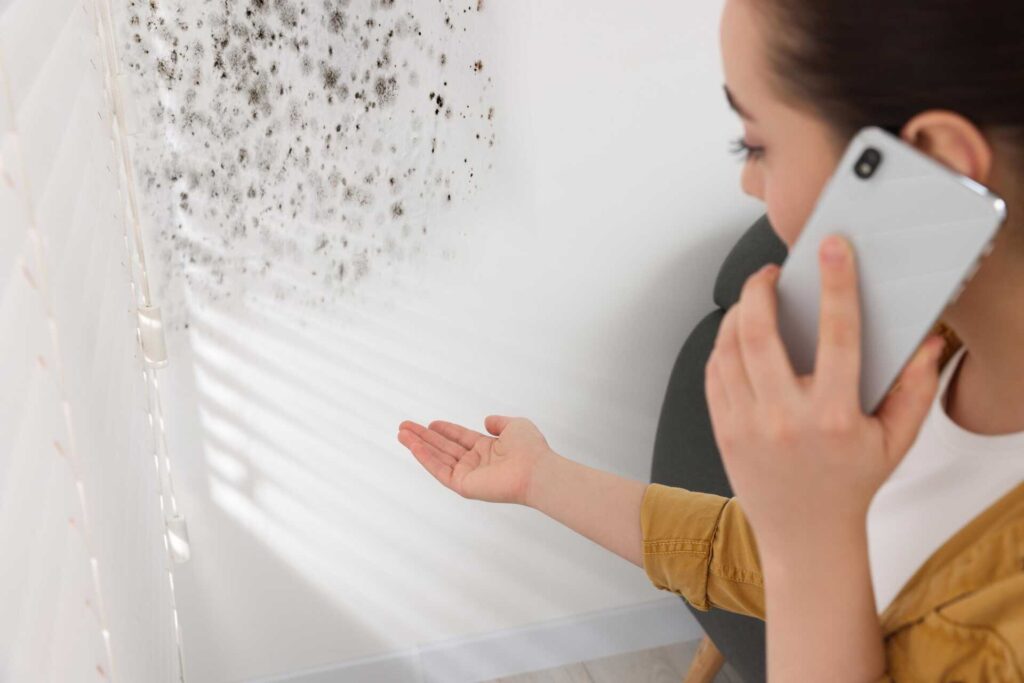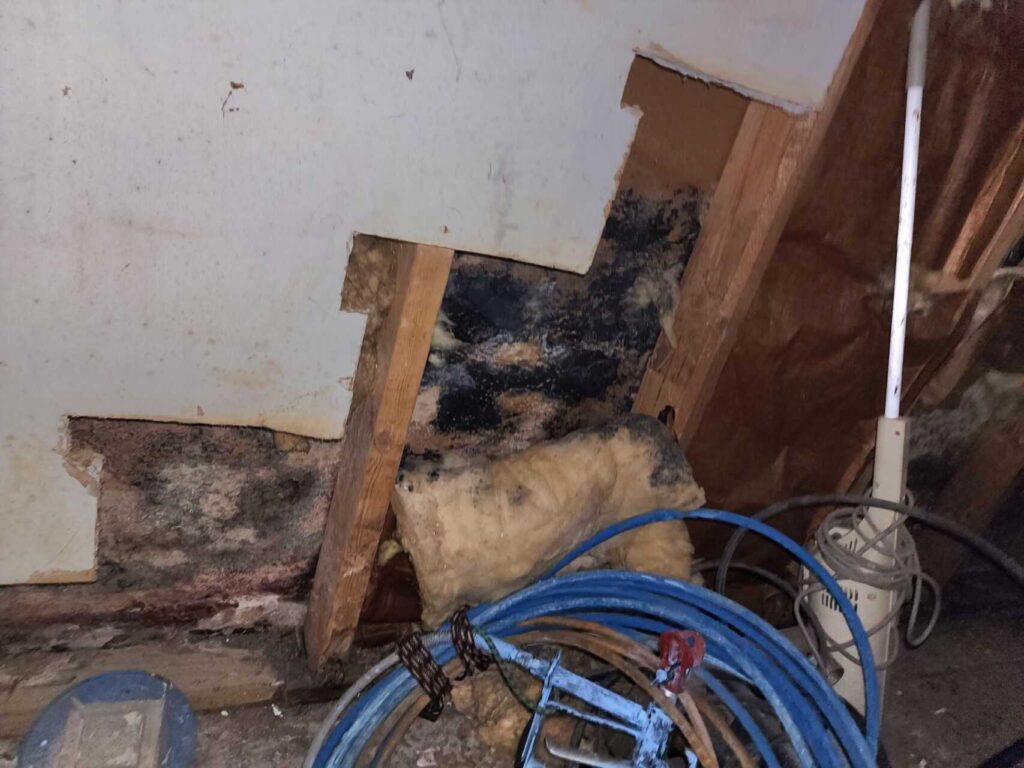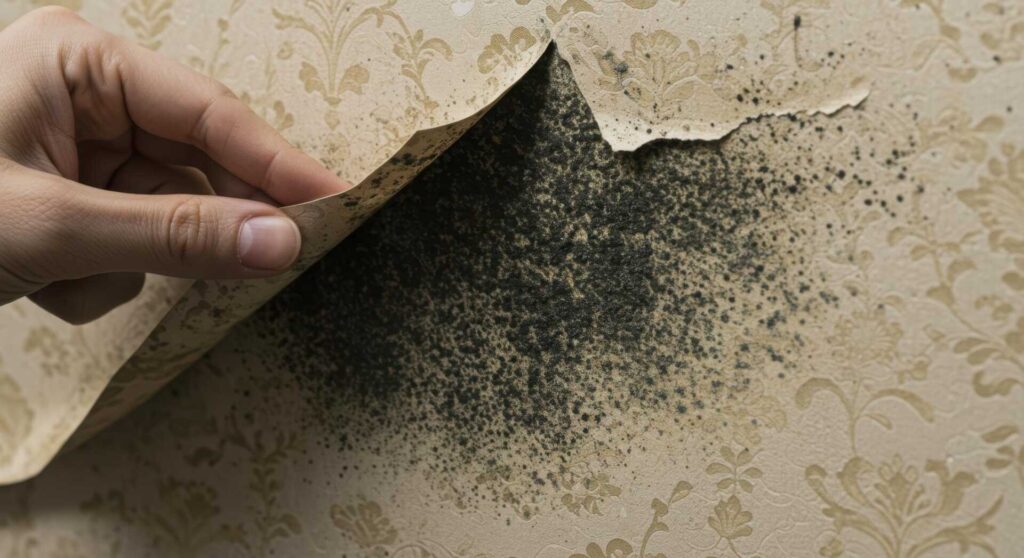
Contents
Mold is like an unwelcome guest that thrives in damp corners of your home, silently spreading if not addressed. To effectively combat this persistent issue, you’ll need a systematic approach that focuses on moisture control and thorough remediation. Identifying the source of moisture is just the beginning; there’s much more to reflect upon. Are you prepared to tackle the complexities of mold remediation? Let’s explore the essential strategies every homeowner should implement.
Key Takeaways
- Identify and control moisture sources by inspecting prone areas and sealing leaks to prevent mold growth.
- Contain contaminated spaces with plastic sheeting and use proper personal protective equipment (PPE) during remediation.
- Remove and clean contaminated materials, sealing them in plastic bags and using appropriate cleaning solutions.
- Monitor indoor humidity levels with a hygrometer and utilize dehumidifiers to maintain levels below 50%.
- Implement regular maintenance, including HVAC inspections and air filter replacements, to prevent mold recurrence.
Identify the Source of Moisture
How can you effectively tackle mold in your home? The first step is identifying the source of moisture, as mold thrives in damp conditions.
Begin by inspecting areas prone to humidity, such as basements, bathrooms, and kitchens. Look for leaks in plumbing, roof, or windows, as even small fissures can create significant moisture accumulation.
Use a moisture meter to quantify humidity levels, targeting areas with readings above 60% relative humidity, which favors mold growth. Pay attention to condensation on windows or walls, as this can hint at poor insulation or ventilation issues.
Don’t forget about hidden spaces; check behind appliances and under sinks. By pinpointing these moisture sources, you can take targeted action to eliminate the conditions that foster mold.
This proactive approach not only enhances your living environment but also connects you to a community of homeowners committed to maintaining healthy homes.
Contain the Affected Area
Once you’ve identified the source of moisture, it’s vital to contain the affected area to prevent mold spores from spreading throughout your home.
Start by sealing off the contaminated space with plastic sheeting, ensuring it covers doorways and vents. Use duct tape to secure the edges, creating a barrier that minimizes airflow. This not only protects unaffected areas but also helps maintain a controlled environment for remediation.
Next, close any windows and doors within the vicinity to limit external air exchange. If possible, turn off your HVAC system to avoid circulating spores through ductwork.
Implementing an air purification system with HEPA filters can further enhance containment by capturing airborne particles.
Monitoring humidity levels is important, too; aim to keep it below 50% to discourage mold growth.
These steps help you effectively manage the situation, fostering a safer atmosphere for you and your family during the remediation process.
Use Proper Personal Protective Equipment (PPE)
Using proper personal protective equipment (PPE) is essential when tackling mold remediation. This equipment serves as your first line of defense against harmful mold spores and potential health risks.
At a minimum, you should wear an N95 respirator, which filters out airborne particles, ensuring you don’t inhale toxic substances. Additionally, use goggles that fit snugly to protect your eyes from irritants.
Don’t forget to don gloves—preferably nitrile or rubber—to shield your skin from direct contact with mold and cleaning chemicals. Long-sleeve clothing and disposable coveralls add an extra layer of protection.
Before you start, inspect your PPE for any damage, as compromised gear won’t provide adequate protection.
Remember, taking these precautions not only safeguards your health but also enhances your confidence in effectively managing the mold remediation process.
Prioritizing your safety creates a supportive environment that fosters successful mold removal, allowing you to reclaim your home.
Remove and Dispose of Contaminated Materials
When you identify materials contaminated by mold, it’s essential to determine the safest methods for disposal.
Utilizing appropriate techniques not only prevents further contamination but also guarantees compliance with local regulations.
Additionally, exploring replacement options for affected materials can help restore your home effectively and safely.
Identify Affected Materials
Identifying affected materials is essential in the mold remediation process. Start by thoroughly inspecting your home for signs of mold growth, such as discoloration or a musty odor.
Pay close attention to porous materials like drywall, carpets, and insulation, as they tend to retain moisture and harbor mold spores. Look for water-damaged areas, as these are prime locations for mold proliferation.
It’s vital to differentiate between contaminated and salvageable materials; if an item is heavily infested or compromised, it’s best to remove it to prevent further spread.
Document your findings, as this will help in evaluating the extent of contamination and determining the appropriate remediation steps. This systematic approach guarantees a healthier living environment for you and your family.
Safe Disposal Techniques
Safely disposing of contaminated materials is essential to prevent mold spores from spreading throughout your home.
First, wear appropriate protective gear, including gloves, masks, and goggles, to minimize exposure.
Next, seal contaminated items—like drywall, insulation, or carpet—in heavy-duty plastic bags to contain spores. Label these bags clearly to inform others of the hazard.
When transporting, avoid shaking or agitating the materials to prevent spore release. Dispose of the sealed bags in accordance with local regulations, as some areas have specific guidelines for hazardous waste.
Finally, always wash your hands thoroughly after handling contaminated materials to reduce the risk of cross-contamination.
Replacement Options Available
After you’ve properly disposed of contaminated materials, it’s time to contemplate your replacement options.
Consider using non-porous materials, such as metal, glass, or treated wood, which resist mold growth. When replacing drywall, opt for mold-resistant variants that contain additives to inhibit fungal development.
For flooring, investigate options like vinyl or tile, which offer durability and ease of cleaning. Ascertain any insulation you choose is moisture-resistant, as this will help prevent future infestations.
Additionally, sealants can protect surfaces from moisture intrusion. Whatever materials you select, prioritize quality and suitability for your environment.
Clean and Disinfect Surfaces
While the presence of mold can be alarming, effectively cleaning and disinfecting surfaces is crucial for preventing its return. Start by wearing protective gear, including gloves and a mask, to safeguard your health.
Use a solution of water and detergent to scrub affected areas thoroughly. Focus on high-touch surfaces, such as countertops and door handles, where mold spores are likely to reside.
After scrubbing, apply a disinfectant specifically designed to kill mold and bacteria. Confirm the product contains ingredients like hydrogen peroxide or quaternary ammonium compounds, as these are proven to be effective.
Follow the manufacturer’s instructions for application and dwell time.
Once you’ve cleaned and disinfected, take care to rinse the surfaces with clean water to remove any residue. This meticulous approach not only eradicates existing mold but also establishes a hygienic environment, promoting your family’s health and well-being.
Dry the Area Thoroughly
To effectively combat mold growth, you must first assess humidity levels in the affected area.
Using dehumidifiers can markedly lower moisture content, making the environment less conducive to mold proliferation.
Monitoring these levels guarantees that you maintain a dry atmosphere, vital for successful remediation.
Assess Humidity Levels
Evaluating humidity levels is essential for effective mold remediation, as high moisture content in the air can exacerbate existing mold issues and promote further growth.
Start by measuring indoor humidity with a hygrometer; aim for levels between 30% and 50%. If you find humidity consistently above this range, it indicates excess moisture, creating an ideal environment for mold.
Identify areas prone to dampness, such as basements or bathrooms, and monitor them regularly. Utilize ventilation strategies—open windows or use exhaust fans—to help reduce humidity.
Also, be mindful of water sources, like leaking pipes or condensation. By accurately evaluating and managing humidity levels, you’re taking a vital step toward preventing mold proliferation and ensuring a healthier living space for you and your loved ones.
Use Dehumidifiers Effectively
Using dehumidifiers effectively can greatly reduce moisture levels, creating an inhospitable environment for mold.
To maximize their impact, position dehumidifiers in areas prone to dampness, such as basements and bathrooms. Set the humidity level to around 30-50%, which is ideal for preventing mold growth.
Regularly check and empty the water reservoir, or use a continuous drainage option if available. For best results, run your dehumidifier continuously during humid months and after water damage incidents.
Monitor humidity with a hygrometer to guarantee effectiveness.
Remember, while dehumidifiers help, they complement other strategies like proper ventilation and immediate water leak repairs.
Implement Preventative Measures
Although mold can thrive in various environments, implementing preventative measures greatly reduces the risk of its development in your home.
Start by controlling humidity levels; keep indoor humidity below 50% using dehumidifiers and proper ventilation. Regularly inspect areas prone to moisture, such as bathrooms, kitchens, and basements. Verify that your home’s gutters are clear, directing water away from the foundation to prevent leaks.
Seal any cracks or gaps in walls, windows, and doors to minimize moisture intrusion. Use mold-resistant materials, especially in areas with high humidity. Additionally, maintain consistent indoor temperatures to discourage mold growth.
Regularly clean and maintain your HVAC systems, as they can circulate mold spores if neglected.
By adopting these proactive strategies, you not only protect your home but also foster a healthier living environment for you and your loved ones.
Prioritizing these measures creates a sense of community and belonging in your home.
Final Thoughts
In the battle against mold, taking proactive steps is key to keeping your home safe and healthy. By addressing moisture sources and employing effective remediation strategies, you can nip mold problems in the bud. Remember, an ounce of prevention is worth a pound of cure; regular inspections and education are crucial for long-term success. Stay vigilant and implement these strategies to guarantee your home remains mold-free and comfortable for you and your family.

